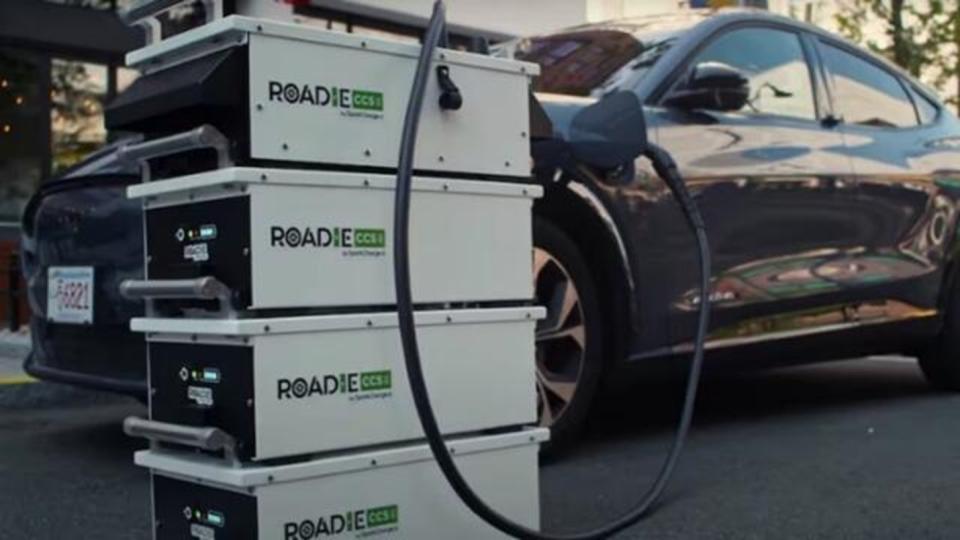Pop-Up Power: How Temporary Solutions Can Solve Your EV Charging Dilemmas

The global push towards vehicle electrification has become a pivotal aspect of transitioning to a cleaner and more sustainable future. Navigating this transition to an electric fleet demands a meticulous and phased implementation strategy. While the ideal approach involves designing long-term infrastructure, it’s important to acknowledge that interim charging solutions, such as short-term, generator-based setups, may be a necessary step to promptly address immediate charging needs.
In this post, we will underscore the significance of comprehensive long-term planning, while acknowledging the reality that temporary solutions may be necessary. This balanced approach ensures a smooth transition towards vehicle electrification without compromising immediate operational needs.
In EV deployments, short-term charging needs often arise due to two primary reasons:
- An organization’s need to deploy zero-emission vehicles more rapidly than the required charging infrastructure can be developed
- Utilities that are unable to support long-term infrastructure, leading organizations to seek temporary solutions to energize sites until the utility is ready to support
Trio recognizes the significance of proactive planning to avoid unnecessary and costly short-term solutions, which can inadvertently conflict with sustainability goals by perpetuating reliance on non-renewable energy sources.
Among the short-term charging solutions available, generators are a common choice. They offer quick deployment, which is beneficial in situations where time is of the essence. However, they come with certain downsides, such as relying on fossil fuels like diesel or natural gas, resulting in carbon emissions and conflicting with the overall goal of fleet electrification. Additionally, generators may require special permitting depending on their size and location, and the associated costs and space considerations can be a concern.
There are three main approaches when deploying generators:
- Generators with chargers (temporary): This setup is used as a temporary solution to provide charging facilities in areas with limited access to the electric grid.
- Generators to power long-term infrastructure solutions when the utility can’t provide power in time for vehicle arrivals: Generators can serve as an interim measure to power charging infrastructure until the utility can provide a permanent grid connection.
- Generators connected to the utility leveraging renewable natural gas: Generators are integrated into the long-term infrastructure, acting as a backup or supplemental solution during peak demand.
Another short-term solution is mobile chargers, which are often an option for light-duty applications. Mobile charging solutions offer many advantages in terms of convenience, accessibility, and portability. However, it’s important to note that while mobile chargers offer benefits, they also require a power source to charge the onboard batteries. This solution is primarily tailored towards short-term utilization and may not be suitable for organizations with medium or heavy-duty vehicles, limiting its applicability for long-term charging.

While short-term solutions can address immediate challenges, the importance of long-term charging infrastructure cannot be overstated. Long-term solutions offer numerous benefits, including convenience, reliability, cost-effectiveness, and scalability. A well-designed charging infrastructure deployment can accommodate the increasing demand for electric vehicle charging, ensuring smooth operations as EV adoption continues to grow.
Developing permanent charging solutions, including a well-planned EV transition strategy, is critical to overall program success. This addresses challenges such as initial costs, grid integration complexities, and regulatory barriers. By aligning infrastructure with vehicle arrivals, stakeholders often avoid both delays and overbuilding risks. Additionally, incentives continue to play a vital role in supporting businesses as they electrify their fleets.
Achieving a successful transition to vehicle electrification requires a strategic and programmatic approach, with a focus on long-term infrastructure development while addressing short-term charging needs when necessary. Trio supports stakeholders in developing comprehensive planning for long-term solutions and offers assistance for immediate charging needs. By prioritizing sustainable practices and investing in long-term charging infrastructure, we can pave the way for a greener and cleaner future.
Trio urges all stakeholders to actively seek assistance with strategic planning for long-term solutions or immediate charging needs. Together, let’s power the transformation towards a sustainable electric mobility landscape. For inquiries or to initiate collaboration, please reach out to sage.mclaughlin@trioadvisory.com.
